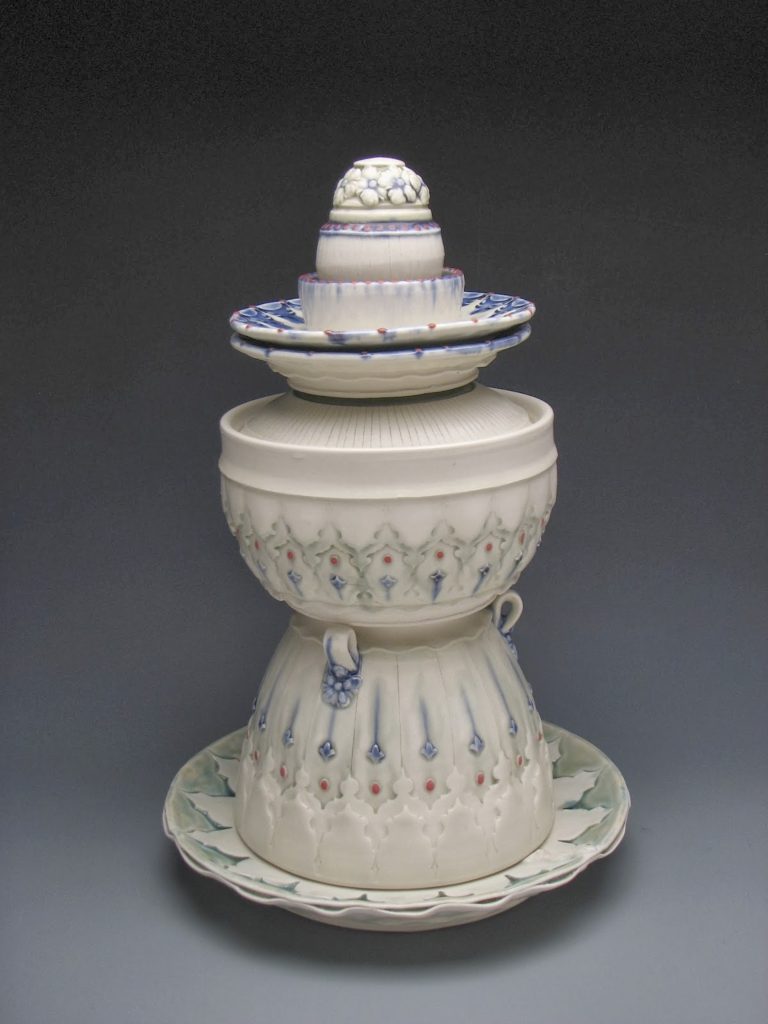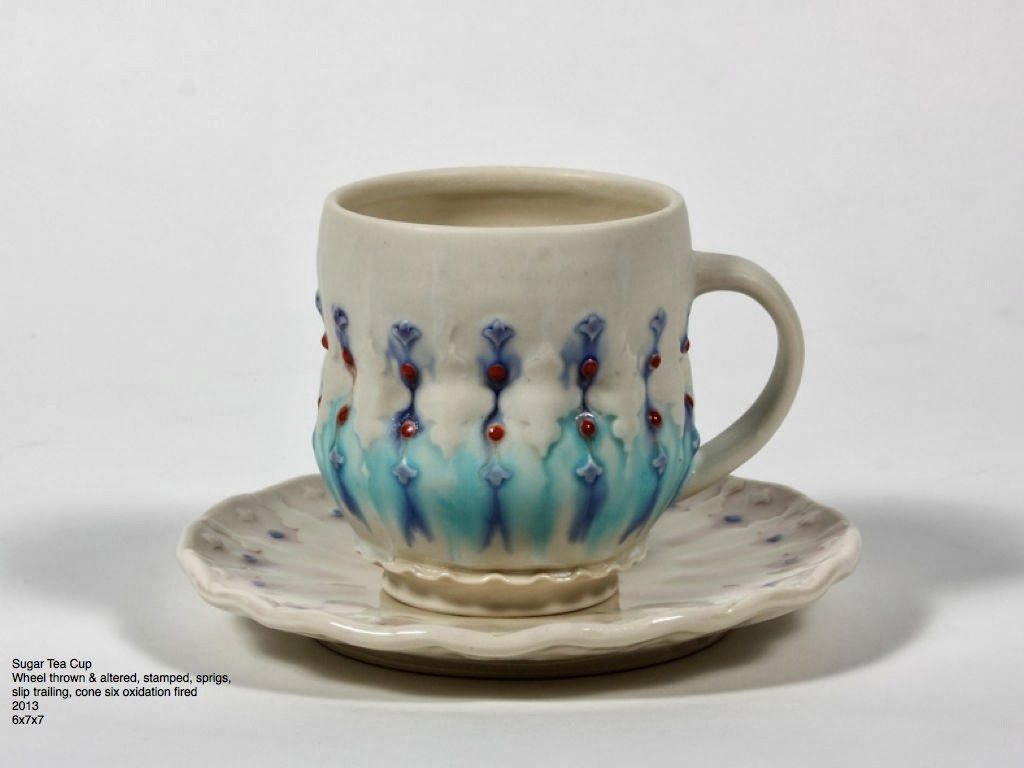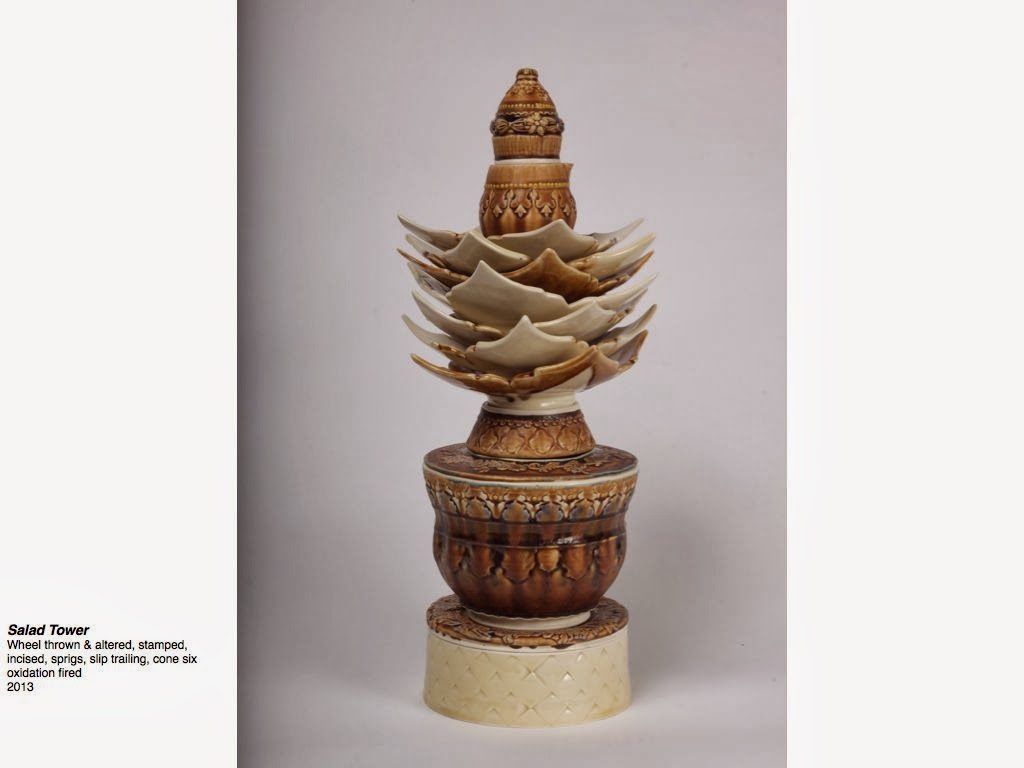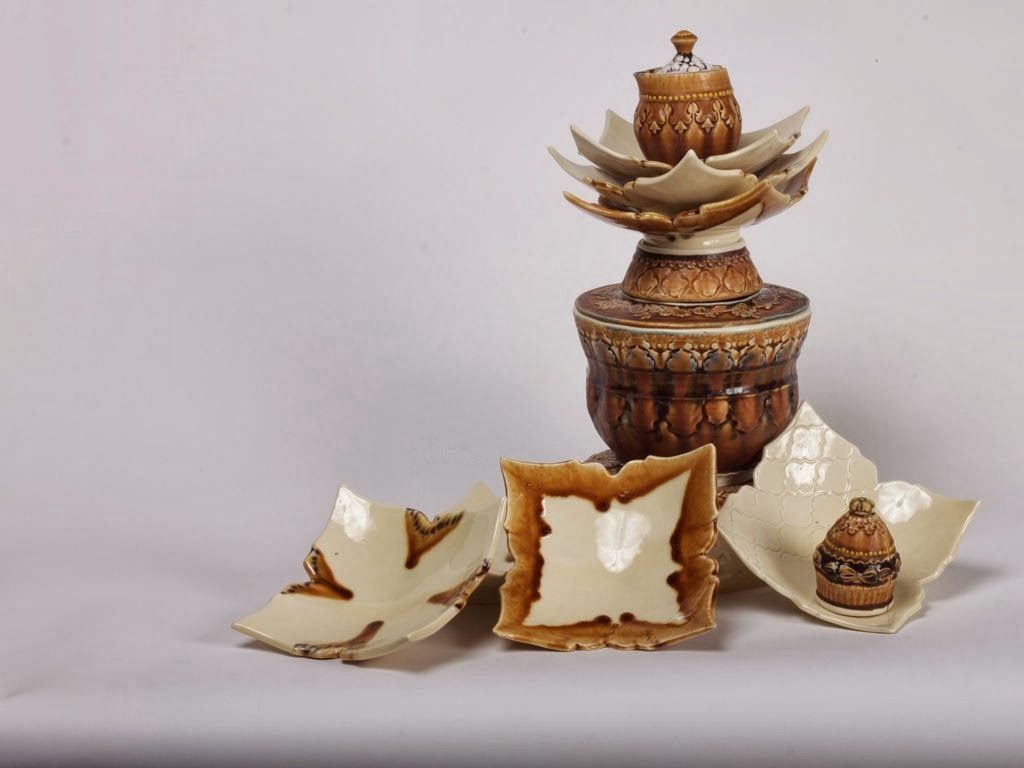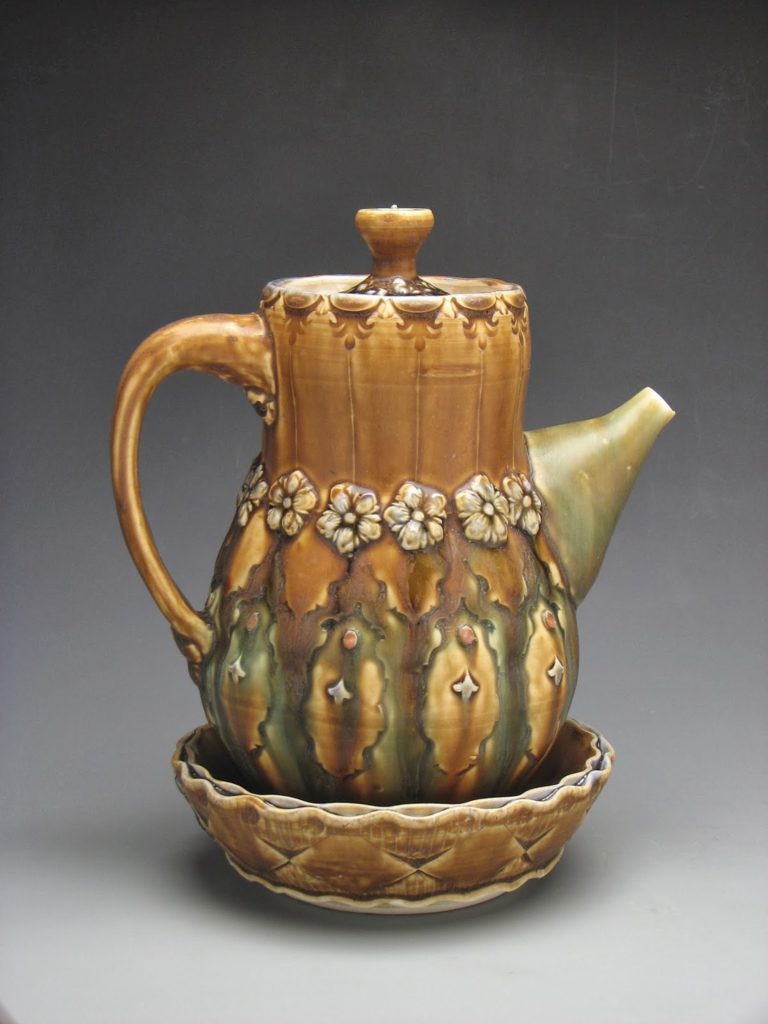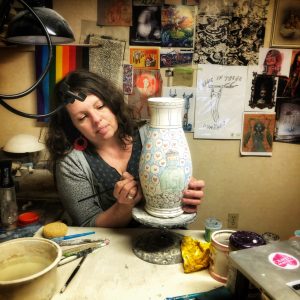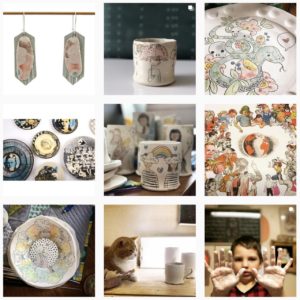table is the place where a need becomes a want. Something we have to
do—eat—becomes something we care to do—dine, and then something we care
to do becomes something we try to do with grace. Eating together is the
civilizing act, we take urges and tame them into tastes.
The
table comes first, then the dishes, food, individuals and conversation.
There is trust and fear that comes with the meal—a trust that with an
honest conversation, knives will not be raised in anger, and a fear that
customs and rituals are not universally understood. Taste is our most
intimate sense, and the table is where we experience it socially. My
studio practice pivots around these notions of the table, and how the
work could bring people back to this place of social intimacy. In the
1880s dinnerware was advertised to women just like high fashion, where
the table was the mannequin that needed dressed. I am pushing ideas of
social iteration at the table through my towers, choreographing the
progression of the meal by stacking the dishes to be unwrapped as a gift
together. By investigating historical meals, I am able to imagine the
choreography of the footmen, who gracefully moved from guest to guest,
and guest to sideboard, and then to consider the modern hostess,
who scrambles to prepare the meal for her guests. These towers replace
the footmen and the frantic host, commenting subtly on such social
implications through their utilitarian attributes. I am using food as a
way of seeing the world, the tableware to create rituals through
decorum, and the table to build camaraderie. As the maker it is my
greatest wish to see these objects in use in the world, although beyond
this notion, my greater desire is through their utility, the necessity
of the table within the home becomes indisputable.

